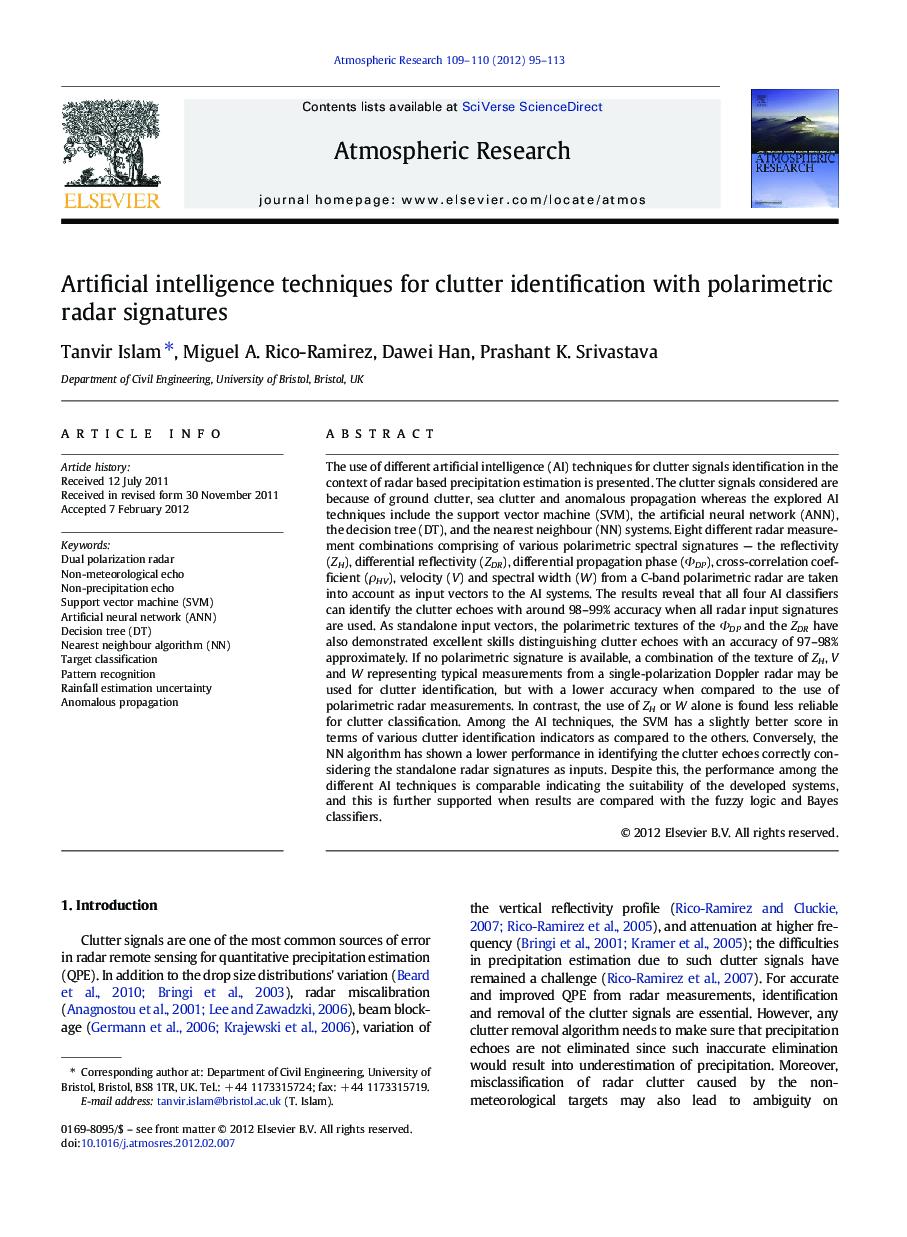| کد مقاله | کد نشریه | سال انتشار | مقاله انگلیسی | نسخه تمام متن |
|---|---|---|---|---|
| 4450234 | 1620554 | 2012 | 19 صفحه PDF | دانلود رایگان |

The use of different artificial intelligence (AI) techniques for clutter signals identification in the context of radar based precipitation estimation is presented. The clutter signals considered are because of ground clutter, sea clutter and anomalous propagation whereas the explored AI techniques include the support vector machine (SVM), the artificial neural network (ANN), the decision tree (DT), and the nearest neighbour (NN) systems. Eight different radar measurement combinations comprising of various polarimetric spectral signatures — the reflectivity (ZH), differential reflectivity (ZDR), differential propagation phase (ΦDP), cross-correlation coefficient (ρHV), velocity (V) and spectral width (W) from a C-band polarimetric radar are taken into account as input vectors to the AI systems. The results reveal that all four AI classifiers can identify the clutter echoes with around 98–99% accuracy when all radar input signatures are used. As standalone input vectors, the polarimetric textures of the ΦDP and the ZDR have also demonstrated excellent skills distinguishing clutter echoes with an accuracy of 97–98% approximately. If no polarimetric signature is available, a combination of the texture of ZH, V and W representing typical measurements from a single-polarization Doppler radar may be used for clutter identification, but with a lower accuracy when compared to the use of polarimetric radar measurements. In contrast, the use of ZH or W alone is found less reliable for clutter classification. Among the AI techniques, the SVM has a slightly better score in terms of various clutter identification indicators as compared to the others. Conversely, the NN algorithm has shown a lower performance in identifying the clutter echoes correctly considering the standalone radar signatures as inputs. Despite this, the performance among the different AI techniques is comparable indicating the suitability of the developed systems, and this is further supported when results are compared with the fuzzy logic and Bayes classifiers.
► Clutter identification using AI techniques and polarimetric signatures is explored.
► The established AI techniques include SVM, ANN, DT, and NN systems.
► The signatures include ZH, ZDR, ΦDP, ρHV, V and W, from C-band polarimetric radar.
► We report the performances of the AI systems for different polarimetric signatures.
► Combined signatures as feed elements can classify the clutter with 98-99% accuracy.
Journal: Atmospheric Research - Volumes 109–110, June 2012, Pages 95–113